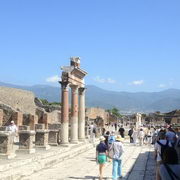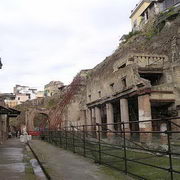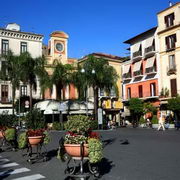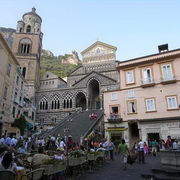A private day tour of Herculaneum, Pompeii and Mount Vesuvius is recommended for visitors who are interested in Roman history and/or archaeology. Your chauffeur will pick you up from the port of Salerno in a Mercedes vehicle for your visit to the ruins and the Volcano. At the end of your excursion you will be returned to your cruise ship.
Herculaneum was discovered in 1709, and although excavations started shortly after and proceeded alongside those in Pompeii, the uncovered area here is much smaller than that of the more famous sibling site. Also, unlike Pompeii, much of the ancient town lies under the modern o ne, making excavation even more difficult. The findings, however, have been stunning. According to researchers, Herculaneum was about a third of the size of Pompeii and was a glitzy seaside resort for wealthy Romans. Most of the town was composed of elegant villas along with apartment blocks for poor laborers.
Pompeii covers a wide area, entering the site from Villa of the Mysteries (Villa dei Misteri) through the Porta Marina, you’ll find the Forum, the centre of the political, economic and religious life of Pompeii – a basilica, temples to Apollo and Jupiter and a market hall. Walking north from here, up the so-called Via di Mercurio, takes you towards some of the town’s more luxurious houses. On the left, the House of the Tragic Poet (Casa del Poetica Tragico) is a typical house from the last days of Pompeii. Close by, the renowned House of the Faun (Casa del Fauno) gets its name from the small bronze statue in the middle of its spacious impluvium (the sunken part of the atrium to carryaway the rainwater).
Vesuvius looms meacingly over the Bay of Naples. After August 24, AD 79, Vesuvius has erupted periodically ever since: Thousands were killed in 1631 and in 1906 it blew the ring off its crater. The last spectcular eruption was on March 31, 1944. The creation of the Vesuvius National Park was agreed in 1991, and declared a World Biosphere Reserve by UNESCO. The park includes the entire area of the volcano, the great archaeological system of Pompeii, Herculaneum and Oplontis, and the Miglio d’Oro (Golden Mile), which features the most wonderful examples of 18th and 19th century villas.



